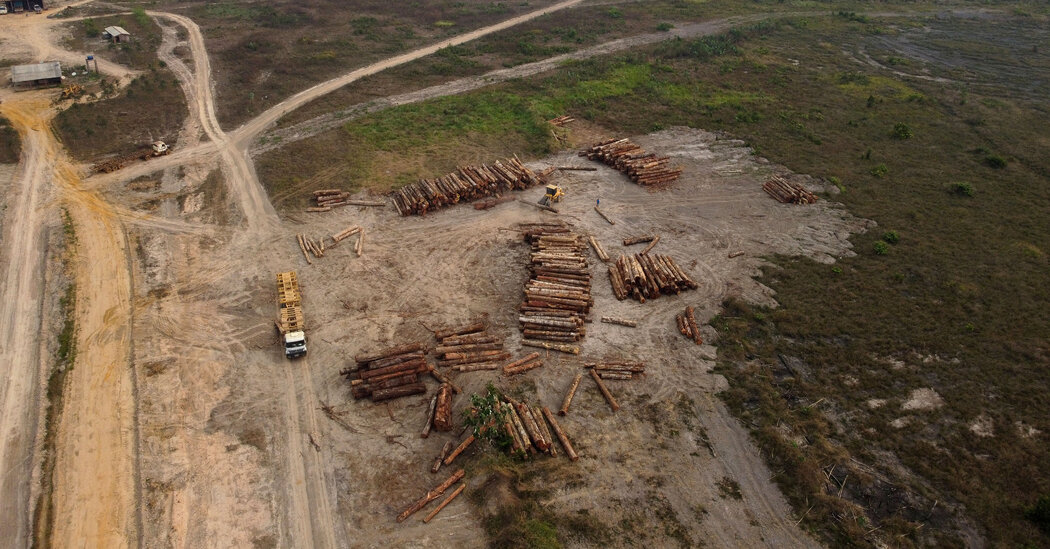New Marburg Outbreaks in Africa Raise Alarm About the Deadly Virus’s Spread
Two concurrent outbreaks of the Marburg virus, a close cousin of Ebola that can kill as many as 90 percent of the people it infects, are raising critical questions about the behavior of this mysterious bat-borne pathogen and global efforts to prepare for potential pandemics.
Marburg, a hemorrhagic fever, is rare: Just a handful of outbreaks have been reported since the virus was identified in 1967. But a steady uptick in occurrences in Africa in recent years is raising alarm.
Marburg causes high fever, vomiting, diarrhea and, in the most severe cases, bleeding from orifices. It spreads between people via direct contact with the blood or other bodily fluids of infected people and with surfaces and materials such as clothing contaminated with these fluids.
One of the two outbreaks, in Tanzania in East Africa, seems to have been brought under control, with just two people left in quarantine. But in the other, in Equatorial Guinea on the west coast, spread of the virus is ongoing, and the World Health Organization said last week that the country was not being transparent in reporting cases.
There are no treatments or vaccines for Marburg, but there are some candidates that have shown promise in Phase 1 clinical trials. However these candidates must be tested in active outbreaks to prove they work, and so far, no vaccine supplies have been delivered to test in the current outbreaks.
“The moment an outbreak is detected there should be a mechanism of moving in quickly,” said Dr. John Amuasi, the head of the global health department at Kwame Nkrumah University of Science and Technology in Ghana who investigated a Marburg outbreak in that country last year.
The W.H.O. and others are good at rapid response to control the spread of a virus, he said, but lack a similarly swift response for research. It requires ready-to-ship stockpiles of the vaccine candidates and researchers equipped to operate without putting additional strain on an already struggling health system; neither currently exists.
The W.H.O. says it has drafted a research protocol that can be applied in these outbreaks and to any other filovirus — the family that includes Marburg and Ebola — and it has been scrambling for more than a month to get trials underway, working against a ticking clock.
If outbreak response works well — isolating cases and tracing contacts — the epidemic will quickly be controlled, which seems to be the case in Tanzania. If the response doesn’t go as well (as in Equatorial Guinea), there are fears of a widespread outbreak and a redoubled need for vaccination.
When an Ebola outbreak began in Uganda in September 2022, the strain that rapidly claimed lives was one for which there was no vaccine, but, similarly, there was a strong candidate waiting a chance to be tested. Researchers announced plans to try it in Uganda. But the outbreak was over by the time the vaccine doses arrived.
The outbreaks in Equatorial Guinea and Tanzania are the first ever reported in either country. The outbreak in Equatorial Guinea began in January. The government has reported the deaths of nine people with confirmed Marburg virus disease and the deaths of another 20 people linked to the confirmed cases who were not tested but are considered probable cases.
The government of Equatorial Guinea has released limited information about the outbreak, and the W.H.O. has said there are likely undetected chains of transmission and that not all the known cases have a clear connection to each other, suggesting a wider spread than previously thought.
“W.H.O. is aware of additional cases, and we have asked the government to report these cases officially to W.H.O.,” Dr. Tedros Adhanom Ghebreyesus, the agency’s director, said last week.
The outbreak in Tanzania was first reported in March. Five people with confirmed Marburg infections have died there, including a health care worker.
No new cases have been reported in Tanzania for two weeks but the Marburg incubation period is 21 days, so the outbreak is considered active.
“This is the hard part, with people in isolation, waiting through the days,” said Kheri Issa, the Tanzania Red Cross manager for Marburg viral disease response, in a telephone interview from the Kagera area where the disease broke out.
The W.H.O. said both outbreaks pose regional risks: Equatorial Guinea has porous borders with Cameroon and Gabon, and so far the cases have appeared in geographically diffuse parts of the country. In Tanzania, the Kagera region has busy borders with Uganda, Rwanda and Burundi.
These outbreaks follow one in Ghana last year and in Guinea the year before — a marked shift from the sporadic occurrences in previous years. Dr. Amuasi said better tracking was likely contributing to what appeared to be a rise in cases. As part of the response to the Covid-19 pandemic, he said, every African country improved its PCR testing capacity and infectious disease surveillance, which means Marburg is being diagnosed more frequently.
But that suggests there may have historically been more of the virus circulating among humans than has been thought, Dr. Amuasi said, and the way it sickens people may be different than has been understood.
Dr. Nancy Sullivan, the director of the National Emerging Infectious Diseases Laboratories at Boston University, said she believes climate change, and the way it is shifting human and animal behavior, is driving an actual increase in cases. “We’re impinging much more on reservoirs” of the virus, she said.
Dr. Sullivan designed the Marburg vaccine candidate farthest along in development when she worked with the National Institute of Allergy and Infectious Diseases. It showed safety and immune response in a Phase 1 clinical trial, and the Sabin Vaccine Institute, a nonprofit organization based in Washington that promotes global vaccine development, is continuing the testing process.
The Sabin Institute said it had 600 doses of the vaccines in vials and ready to use and planned for an eventual stockpile of 8,000 by the end of this year. Dr. Sullivan said 600 doses would be enough to start a ring vaccination trial of those at risk in Tanzania and Equatorial Guinea.
But the W.H.O. has yet to announce operational details for a trial of this or three other vaccine candidates. Transporting the doses into the country is just one challenge; a trial would require a principal investigator from the outbreak country, legal agreements with the vaccine makers and regulatory approval. Equatorial Guinea has a notoriously opaque government that has been under the control of President Teodoro Obiang Nguema Mbasogo and his family for more than 30 years.
Without committed resources and preapproved trial protocols, filovirus outbreaks will keep happening with little progress on interventions that could stop them, Dr. Amuasi said.


